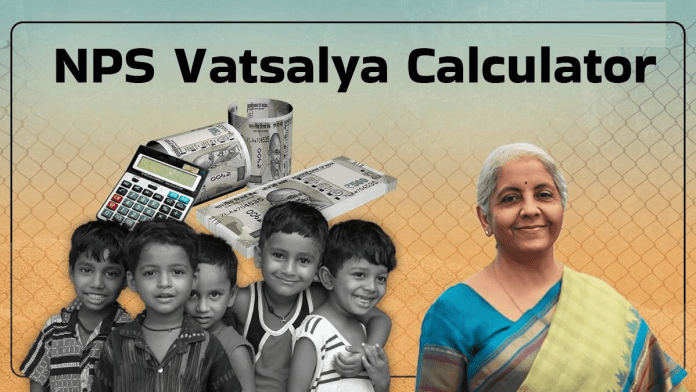NPS Vatsalya vs PPF: Under the NPS Vatsalya scheme, any Indian parent can start investing in the name of their child with a minimum of Rs 1000. There is no limit on the maximum amount. When the child turns 18, you can withdraw the money deposited in it.
NPS Vatsalya vs PPF: Recently a scheme has been started by the central government, under which you can deposit money for your children. This scheme is NPS Vatsalya, under which you can open a National Pension System (NPS) account for children below 18 years of age. By investing in this scheme, when the children grow up, a large fund will be deposited in their name. In such a situation, this is a scheme related to the future of children.
Under the NPS Vatsalya scheme, any Indian parent can start investing in the name of their child with a minimum of Rs 1000. There is no limit on the maximum amount. When the child turns 18, you can withdraw the money deposited in it. However, if you want, you can also keep it for 60 years, which can give you a lot of money.
When and how much money can be withdrawn from NPS Vatsalya?
In this scheme, the child’s account should be at least 3 years old. After the child turns 18, 25 percent of the amount can be withdrawn from this account for education or treatment. After the age of 18, 20 percent of the deposited amount can be withdrawn. You can buy annuity of 80 percent of the amount. This annuity will create a pension for your child, which will start getting after 60 years.
Also Read- Change in Ayushman Bharat Scheme rules: Now Ayushman Bharat health insurance for senior citizens above 70 years, know application process here
What is the PPF scheme of Post Office
The Public Provident Fund (PPF) scheme is run by the government under the post office, which comes under the Small Savings Scheme. Any Indian citizen can open an account under this scheme. Most people invest in this scheme for their children because it is a long term scheme which matures after 15 years. However, you can extend it twice by 5 years each. The annual return under this scheme is 7.1 percent.
Difference between PPF and NPS Vatsalya
- PPF has an annual interest of 7.1 percent, which gives guaranteed income. On the other hand, there is no fixed return in NPS. It can give an estimated 10 percent annual return because it is a market linked scheme.
- Under the PPF scheme, you can open an account with Rs 500, while in NPS Vatsalya, you can start investing with Rs 1000.
- PPF scheme is an investment option, while NPS Vatsalya is a pension scheme. In NPS Vatsalya, you will be able to withdraw 20 percent of the amount on maturity. For the remaining pension, you will have to buy annuity.
Which scheme will make you a millionaire quickly?
- 10 thousand rupees will be deposited in NPS Vatsalya to 11 crore rupees.
- According to PIB in Chandigarh, under NPS Vatsalya scheme, if you deposit 10 thousand rupees annually, then this amount will have to be deposited for 18 years. At the age of 18, your total investment will be 5 lakh rupees. A return of 10 percent has been added to it on an annual basis.
- If you keep this amount for 60 years and add a return of 10 percent annually, then the total coppers will be 2.75 crore rupees.
- On the basis of 11.59 percent annual return, by the age of 60, these coppers will be 5.97 crore rupees.
- Similarly, on the basis of 12.86 percent annual return, the total coppers will be 11.05 crore rupees at the age of 60.
In how many years will you become a millionaire in PPF?
If you invest Rs 1.5 lakh annually in PPF scheme and extend it for another 10 years after the maturity of 15 years, i.e., keep the investment for a total of 25 years, then on the basis of 7.1 percent interest, you will have a total of Rs 1,03,08,015.
Related Articles-
Cheque Bounce Rule: Keep these things in mind while making payment by cheque
Bank Locker Rules: You cannot keep these things in a bank locker as per RBI rules, know rules here


